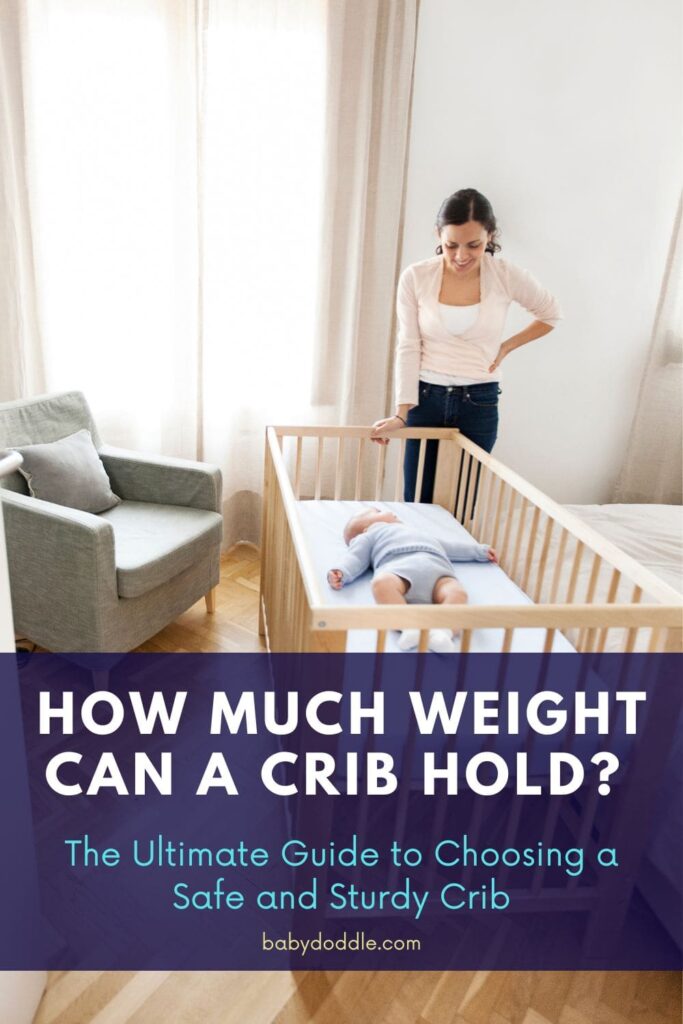As anxious new parents, my wife and I had a million questions when preparing the nursery for our baby’s arrival. “How do we babyproof everything?” “What toys and books should we get?” But one question stopped me in my tracks:
“How much weight can a crib hold?”
It wasn’t something I had thought much about. A crib seems like such a standard, sturdy piece of furniture for infants. But I started to worry—what if the crib breaks if I try to lean over the railing to pick up my crying baby in the middle of the night? Could it collapse under a bunch of stuffed animals? What if my toddler tries to climb in with their baby sibling?”
I knew a crib needed to be a safe haven for our little one. I wanted to understand the structure and weight limits before trusting it to hold my most precious bundle.
So I did tons of research into safety standards, design features, durability tests, and manufacturer warranties. If you’ve had similar worries about your baby’s crib strength and weight limits, I’m sharing what I learned in this ultimate guide.
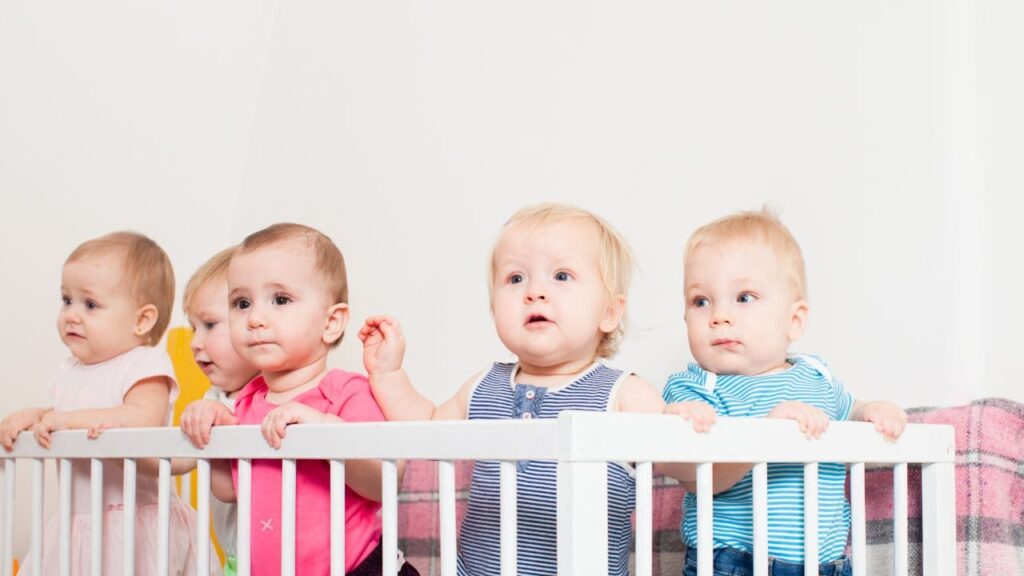
What Are Standard Crib Weight Limits and Testing Procedures?
The anxiety of being a new parent can get amplified by all the safety warnings and product recalls we see. But when it comes to crib sturdiness, you can breathe a little easier. Government and independent agencies have rigorous safety standards.
The Consumer Product Safety Commission (CPSC) and the American Society for Testing and Materials (ASTM International) publish juvenile product standards. They dictate weight stress tests for household items like cribs, high chairs, and strollers.
For cribs, their mandated tests are:
- Vertical Impact Test: Dropping a weight repeatedly on the crib’s mattress platform and checking for collapse or failure
- Torque Test: Applying force to crib components like spindles to ensure they don’t detach
- Shake Test: Vigorously rocking/tilting the crib without a mattress to check for loose joinery or parts
- Teething Rail Test: Applying force equivalent to a baby biting the railing, ensuring it doesn’t crack or break
So when you see a label stating a crib “Meets or exceeds CPSC & ASTM safety standards”, you can be confident in its construction. Now for those all-important weight numbers…
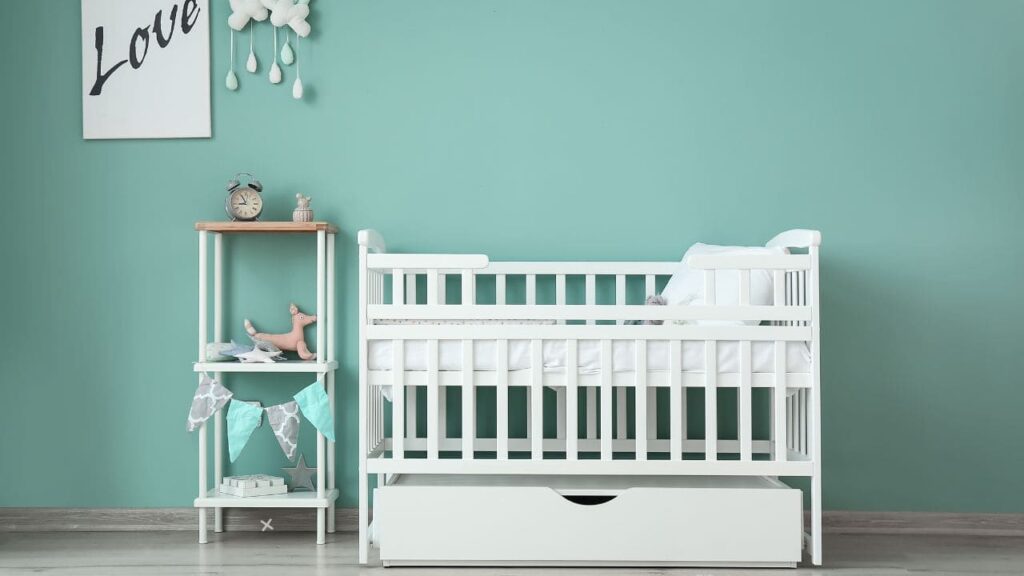
What’s the Weight Limit for Standard Cribs?
After passing over 50 different safety tests, standard full-size cribs for home use can safely hold over 50 pounds. That accounts for the weight of a mattress, sheets, and a growing toddler. Many models are tested significantly beyond that threshold just to be safe.
Some portable or compact “mini/travel cribs” have lower weight limits, typically ranging from 22-40 pounds. So check the manufacturer guidelines. When in doubt, choose a standard full-size crib for its durability and higher weight rating.
Bottom Line: A full-size crib meeting current standards should have no problem supporting babies and toddlers up to 50 pounds—plus accessories!
| Crib Type | Weight Limit |
|---|---|
| Standard crib | Over 50 lbs |
| Mini crib | 22-40 lbs |
| Portable crib | Up to 50 lbs |
| Convertible crib | Up to 100 lbs (varies in older child modes) |
| Bassinet | 15 lbs or less |
What Design Factors Impact How Much Weight a Crib Can Handle?
Aside from passing CPSC/ASTM tests, there are some key structural design factors that improve crib stability:
Use Rigid Hardwood Rather Than Softwood
The wood type and quality affect furniture integrity for sure. Opt for oak, maple, and ash hardwood instead of pine softwood. The dense grain prevents splintering from normal use. Hardwood cribs better resist loosening or warping too.
Choose Sturdy, Straight Mattress Supports
Under the crib mattress, look for reinforced metal mattress supports. The bars should be straight and centered without sagging. Proper support prevents Cave-In hazards associated with platform weakness.
Secure Reinforced Corner Brackets and Rails
For a wobble-free crib, sturdy corner L-brackets, connectors, and side rails are key. Checking that hardware is tightly secured and reinforced is essential for stopping collapses.
Install Wheels and Locks Correctly If Present
Wheeled cribs are convenient for moving between rooms. However, locking the wheels is crucial to prevent dangerous sliding and tip-over accidents. The locks should fully immobilize the wheels!
Select Durable, Non-Toxic Finishes
Some finishes like paint or varnish contain toxic chemicals. But water-based or organic finishes meet eco-friendly protocols against nasty fumes. Durable finishes also prevent Chips, cracks, and billing that undermine frame strength.
Pro Tip: When researching cribs, look for reassurances like: “Made from sustainable New Zealand pine wood and reinforced with double-walled sides, heavy-duty mattress supports, and robust corner brackets to ensure durability and strength.” High-quality materials make a big difference!
| Certification | What It Means |
|---|---|
| JPMA Certified | Juvenile Products Manufacturers Association standard for safety and quality |
| GreenGuard Gold | Certified as low emissions of volatile organic compounds (VOCs) |
| Eco-Healthy Child Care | Meets emissions standards for safe indoor air quality |
| Made Safe Certified | Free of over 10,000 potentially harmful chemicals |
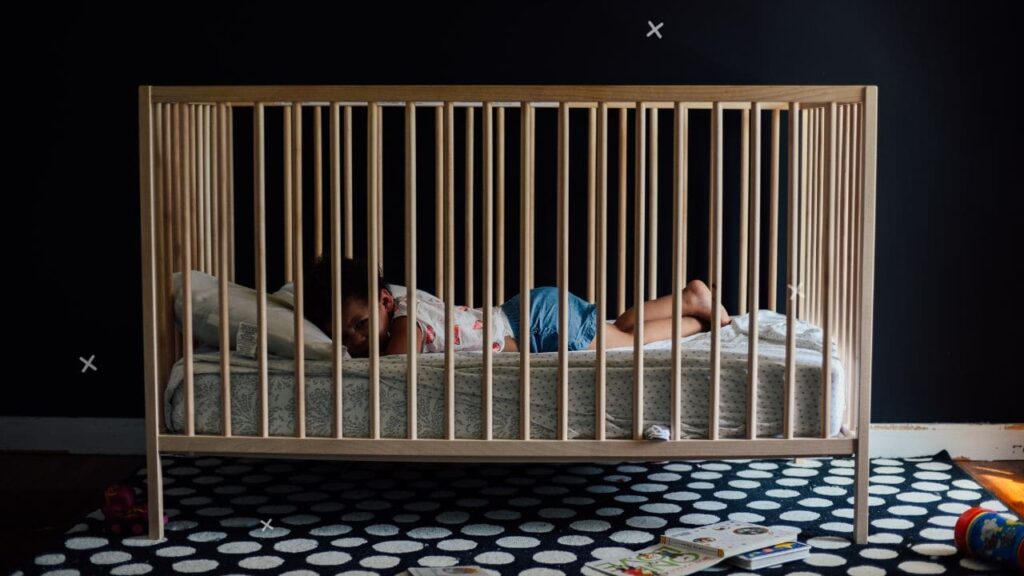
Can I Get in the Crib With My Baby? Dos and Don’ts
I’m going to be real with you—as exhausted new parents, it’s tempting to want to climb in the crib and nap alongside your little one. I get the appeal after restless nights trying to soothe a sick or colicky baby. You just want to snuggle up with them to keep watching over them and grab some shut-eye.
But it’s absolutely not recommended or safe for adults to get into a baby crib. Here are a few reasons why:
- You’ll likely exceed the crib’s weight capacity, even if you’re just average size. Remember standard limits are around 50 pounds.
- Tossing and turning risks loosening hardware and compromising stability. The repetitive strain can crack joints.
- The mattress may tilt or tip since cribs aren’t made for two occupants. Suffocation hazards are introduced.
- It encourages risky habits. If the baby wakes up while you’re dozing and tries to climb out, the injury could occur.
I know it’s discouraging if you craved that bonding time. But there ARE some safer alternatives to enjoy snuggles and proximity at naptime:
- Place a comfy mattress or thick memory foam pad on the nursery floor right near the crib. You’ve created a special spot to hang out together!
- If the baby is older than 6 months, try babywearing in a comfortable, ergonomic carrier during their snooze.
- Set up a video baby monitor and sleeping bag so the baby feels cozy. Then watch over them from a nearby chair as they drift off.
The most vital thing is prioritizing safety by resisting that strong temptation to wedge yourself into the crib too. Your baby will treasure peaceful time with you outside the crib when the time is right!
Top Tips For Selecting the Most Sturdy and Durable Crib
Here are my top recommendations for choosing a high-quality crib built to handle plenty of weight with grace:
Check for stability safety certifications —Models bearing JPMA, GreenGuard Gold, or Eco-Healthy Child Care seals ensure protection.
Inspect materials – Finishes, joins, and wood grain up close rather than just online before buying!
Do the “shake” test – Wobble or rock the display floor model without a mattress. If it creaks loudly or feels loose, that’s a red flag.
Review the warranty – Lengthy warranties signal the company is confident in durability. I prefer at least 3 years of coverage.
Ask the manufacturer directly about weight testing if it’s unclear from the specifications online or on the packaging. Reputable brands will happily share.
Know when upgrades are worthwhile if you’re reusing a crib for multiple kids. For example, adding on a toddler rail with increased weight capacity.
Choose wisely and your baby is sure to enjoy years of safe rest within their comfy, resilient crib—maybe even until they’re ready for a “big kid” bed!
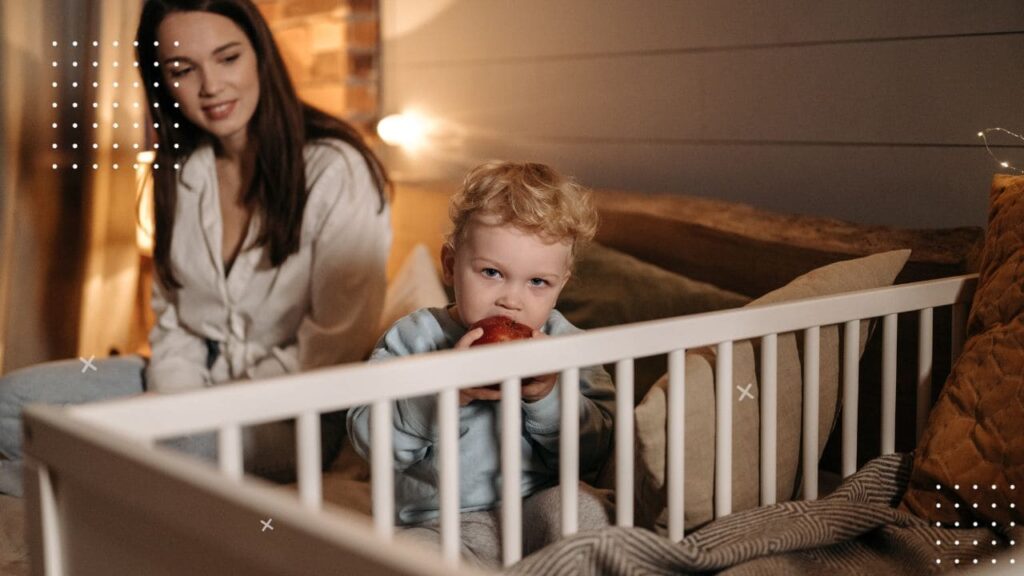
Steps To Test Crib Sturdiness and Stability Before Use
Cribs often ship disassembled. So after putting together all the components, take time to thoroughly vet its workmanship and durability. Better to identify issues NOW rather than wait until you’ve got a sleeping babe inside!
Here is my family’s crib inspection ritual before getting the official “baby-approved” stamp:
- Visually scrutinize the joints: Check that brackets and joinery mesh tightly with no cracks or splinters.
- Inspect mattress platform: Verify mattress support bars sit straight and feel reinforced. Apply pressure to check they don’t bend or sink.
- Do a “baby bounce”: Press down firmly on the mattress in multiple spots to simulate the baby moving around. Ensure the base feels evenly sturdy.
- Try vigorously rocking: With NO mattress inside, aggressively tilt the crib from side to side at both front and back. Listen for any startling creaks or clunks.
- Assess mobility: Engage the wheel locks, if present. Attempt to force the crib to slide or tilt. Movement signals the locks need adjustment.
- Leave no bolt unturned: Examine every hardware connection, even obscured spots. Re-tighten any loose knobs immediately.
- Peer under the hood: Have helpers tilt the crib to inspect maintainers like support slats from all angles, tapping parts to confirm rigidity.
Take it from this slightly obsessive dad…thoroughly VETTING a crib gives peace of mind. After buying two faulty cribs initially, our safety ritual revealed issues needing exchange. The third time was the sturdy charm!
Maintaining Crib Stability and Integrity Over Time
The gears will be constantly turning in your little one’s head as they stand up, jump up and down, and eventually attempt those daring escapes! All that activity can loosen crib parts so upkeep is key.
Here are 5 maintenance tips:
- Review the manual for the manufacturer’s unique instructions on crib preservation. For example, applying wood polish yearly or avoiding harsh cleaners.
- Inspect ALL joints monthly, even hidden corners. Tighten any loose bolts immediately, ordering replacement hardware if needed.
- Check mattress fit twice yearly as the baby grows. Ensure it’s flush on all sides since gaps can trap and injure tiny limbs.
- Assess wheels and locks to instantly address signs of sliding or stuck wheels. Both issues endanger stability.
- Replace damaged components right away. Don’t risk makeshift fixes. Call the company hotline if needed to order parts.
Staying vigilant with upkeep lets you detect and prevent gradual structural weakening. Then the crib stays bouncy and sturdy year after year!
| Task | How Often? |
|---|---|
| Inspect all joints and hardware | Monthly |
| Check mattress fit | Twice Yearly |
| Assess wheels and locks | Monthly |
| Review assembly manual | As needed |
| Replace damaged parts | Immediately |
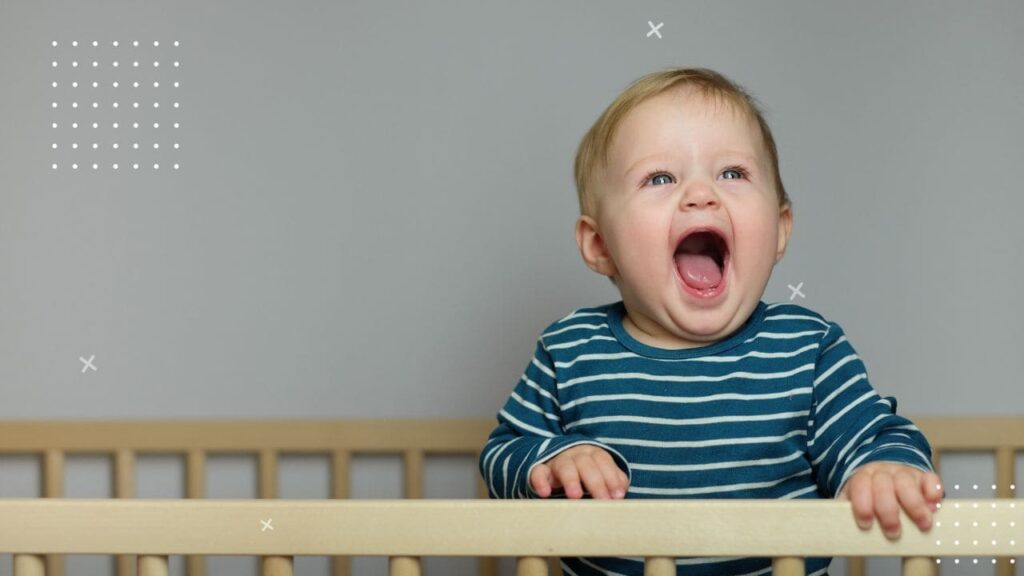
At What Point is it Unsafe to Keep Using a Crib?
While cribs withstand a lot of mileage over toddlerhood, decline eventually happens. Being realistic about when to RETIRE a crib is essential to avoid safety hazards.
Red flags to stop usage NOW:
🛑 Visible cracks, splits or rotting in the frame
🛑 Major wobbling, leaning, or inability to stand level
🛑 Joints/brackets that won’t tighten and secure properly
🛑 A mattress platform bending substantially under any weight
🛑 Missing, damaged, or non-functioning wheels or locks
Once you spot such clear signs of instability or collapse risk, it’s no longer safe. The best call is to invest in a brand-new crib to continue promoting restful nights.
For convertible cribs transitioning into toddler beds, weight limits still apply but generally increase. So if the crib foundation remains sturdy without the red flags above, use likely remains safe a while longer. But I do recommend capping it around age 5. Kid antics accelerate wear and tear!
In Conclusion—How Much Weight Your Crib Realistically Holds
When I peek into my daughter’s nursery now and see her sleeping soundly, I’m so relieved we chose such a well-built crib. All the effort in researching weight limits paid off with sturdier peace of mind.
Now I know standard cribs and convertible models adhering to national safety standards reliably bear over 50 pounds—even with accessories piled in! Manufacturing regulation coupled with robust materials like dense hardwood makes that possible.
Yet proper assembly, vigilant upkeep, and common sense NOT to overload with kids or heavy objects remain key. Respecting reasonable capacity protects the crib’s physical integrity too. That way your baby can snuggle in night after night, getting the full benefit of quality construction.
Understanding weight thresholds ultimately builds confidence in your crib selection. Then it’s easier to say “sweet dreams!” as you watch your tiny one contentedly drift off.
So take a deep breath, new moms and dads. When armed with crib sturdiness savvy, you’ve given your child a safe sanctuary for healthy rest. And that peace of mind is a beautiful gift.
I’m eager to answer any other questions you may have about crib durability, weight testing standards, and choosing quality brands that go the extra mile for baby’s safety and comfort. Now…who wants to nap?
FAQ – How Much Weight Can a Crib Hold?
What if my crib seems loose but isn’t fully broken?
If your crib does not have any severe structural damage but just seems loose and wobbly, first fully tighten any visible loose hardware. Still make sure to discontinue use immediately if the problem persists. Contact the manufacturer about replacement parts or options. Even minor looseness can lead to a dangerous collapse, so don’t take chances.
Can I reinforce an old crib myself to make it sturdier?
It’s not advisable to try DIY fixes to increase an old crib’s weight capacity yourself. Crib construction involves very specific safety-tested design elements. Replacing or adding non-regulation parts undermines the carefully vetted structure. Save an aging crib for stuffed animal storage instead and choose a new crib rated over 50 lbs for peace of mind about dependable limits.
My crib instructions say to stop using in crib mode once child reaches 35 inches tall. But can’t I keep using it longer?
Reach the 35 inch mark, it’s vital to transition your growing toddler into a youth or full-size bed. Their height makes it more likely to start attempting escapes with injury risk. Plus, enduring much weight near the railings once a child is standing can start comprising the integrity. Abide by manufacturer height limits for safety.
I purchased a used crib that seems study. But how can I check it meets standards?
While scoring deals on secondhand baby items is great for budgets, safety matters most with cribs. Start by looking for a certification label stating it meets current JPMA, AST, CPSC requirements. If no label, check the manufacture date inside to ensure it’s not before 2011 when standards changed. Contact the maker directly with model numbers to confirm testing status too before trusting its capacity.
My baby moves a lot at night. Do cribs have weight limits if mattress is inclined?
Inclined sleepers and hammocks have separate and lower weight limits than traditional cribs. But for flat crib mattresses, normal weight allowances remain in place up to 50+ lbs. Just ensure your active sleeper can’t shift the mattress much themselves and routinely check hardware that anchors the mattress frame. Restrict excess mobility but rest easy on standard limits.
